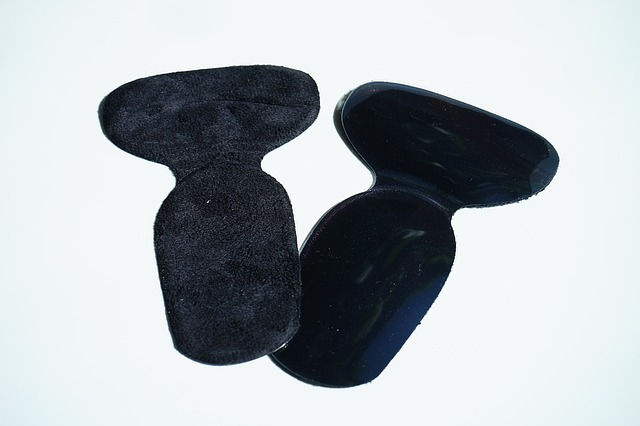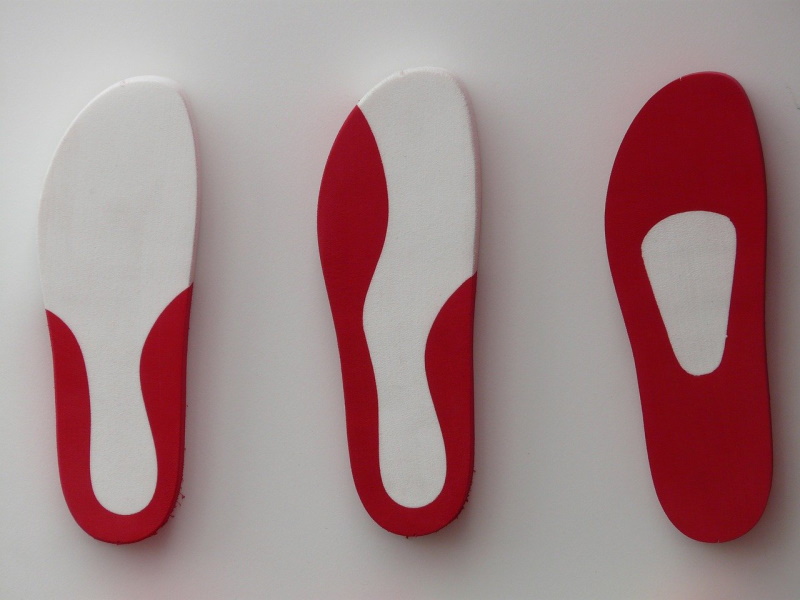Your feet are subjected to a great deal of strain and pressure every day. And this pressure can lead to numerous foot disorders and complications, especially if your shoes don’t provide adequate support and cushioning. Adding insoles to your work shoes, training shoes or any other type of footwear that you use regularly can help to increase the support that they provide while making them more comfortable. However, you will only enjoy the benefits that insoles offer if you choose the right type for your specific needs. Here are some of the most popular types of insoles and their best applications.
Athletic Insoles
Also known as sports insoles, athletic insoles are designed to provide extra support, stability as well as comfort – for improved athletic performance. Different types of sports place different levels of strain and pressure on the feet. As an athlete, you should buy a pair of insoles specifically designed for the sports that you are participating in. For instance, if you are a runner, your feet will be pounding hard pavements and surfaces regularly. Therefore, you need to look for insoles that offer ample padding in the forefoot and heel areas, to absorb impact whenever your foot strikes the ground. On the other hand, if you are participating in winter sports, you should look for insoles that provide both insulation and foot support.
Apart from providing cushioning, shock absorption and support, athletic insoles also help to increase the foot’s range of motion. For instance, when you are playing a game like basketball that involves lots of movement and directional changes, your foot’s mobility is largely dependent on the midfoot and rearfoot. Excessive or inadequate motion in the rearfoot and midfoot will increase the chances of a foot injury. And this is where insoles come in. The right pair of insoles will keep your foot properly aligned, propel you forward, and reinforce stability and mobility in your foot.
Athletic insoles are also designed to provide increased traction and a stronger grip, thus enabling you to be quicker on your feet. The increased grip and traction will prevent your foot from sliding inside the shoes, thus keeping it optimally positioned while reducing the risk of injuries. Some athletic insoles can also help to alleviate some common foot conditions such as plantar fasciitis. No matter the sports you are participating in or the foot condition you are suffering from, you can always find the right pair of athletic insoles for your specific needs.
Heat Moldable Insoles
Most insoles will take approximately 2 to 3 weeks before they can fully conform to the shape of your foot. Heat moldable insoles are designed to shorten this waiting period. You just need to heat them in an oven according to the manufacturer’s instructions, so that the material can become flexible and soft. Once the insoles are cool to touch, you simply need to stand on them, and they will assume the shape of your foot. Different brands require different temperature levels. Therefore, it’s important to follow the manufacturer’s instructions to prevent damage. As much as heat-moldable insoles will help you to obtain a custom fit fast, they may not provide the support you need, especially if you have foot problems like heel spurs, collapsed arches or poor pronation. If you have any of these foot problems, it’s highly advisable to consult a foot podiatrist first before you buy insoles.
Insulating Insoles
During winter, heat can escape from the inside of your shoes through the soles, leaving your feet feeling cold. Therefore, you need to come up with ways of locking in this heat, so that your feet can remain warm throughout the day. Well, insulating insoles were specifically designed for this purpose. While there are different types of insulating insoles available today, all are designed with a common goal in mind – keeping your feet toasty and warm during cold weather.
For instance, some insulating insoles work by trapping warm air inside the shoe, thus preventing it from escaping. As a result, your feet will remain warmer for a longer period. You will also come across battery-powered insulating insoles. Such insoles will keep your feet feeling toasty and warm, even in extremely cold temperatures. Battery-powered insulating insoles are ideal for winter camping trips.
Custom Orthotics
Custom orthotics are a special type of insoles, designed to help with ankle and foot alignment. They can be used to provide ankle support, correct foot deformities, minimize the risk of further leg and foot injuries, help the ankle and foot function better and correct foot imbalances. In short, they help to reduce strain and stress on your body, by ensuring your feet are properly aligned whenever you are walking, standing, or running. These shoe inserts can be used to treat a wide range of medical conditions like back pain, bunions, arthritis, hammertoes, flat feet, plantar fasciitis, high arches, and heel spurs, among others. Custom orthotics can also help people with underdeveloped foot and leg muscles. Also, they can be used to provide additional cushioning and support in key areas of the foot like the ball of the foot or the heel.
Custom orthotics can be made using a wide range of materials. The foot specialist will recommend the materials to be used, depending on the symptoms or the condition that is being treated. Those designed for providing additional support are usually made of rigid materials like plastic or carbon fiber while custom inserts designed for cushioning are made of flexible materials like foam.
Tips for Buying Insoles
As you can see, there are numerous types of insoles, designed for different uses and applications. Therefore, when you are buying insoles, it’s important to choose a pair that addresses your specific needs. Here are some factors to consider when buying insoles and inserts.
- Size: Insoles are available in a wide range of sizes. Getting the right size for your feet and shoes is vital. Apart from size, you should also consider the placement. Most shoes are equipped with removable insoles, which don’t offer adequate cushioning. Therefore, if you purchase full-length insoles for your shoes, you will first have to remove the insoles that came with the shoes and then replace them with the pair you’ve bought. On the other hand, if you’ve purchased three-quarter length inserts or insoles, then you can comfortably use them with your shoes’ insoles. The majority of three-quarter length insoles are thinner compared to full-length insoles, which means they will not interfere with the fit and comfort of your shoes, even when used together with the shoe’s insert.
- Arch type: When buying insoles for your footwear, you should always insist on acquiring a pair that aligns with your arch type. Using insoles that are not designed for your specific arch type can lead to serious foot problems. There are 3 main types of arches – neutral arches, raised arches and fallen arches. Neutral arches are the most common. They are also the most efficient when it comes to shock absorption.
Approximately 60% of the world population has neutral arches. People with neutral arches should choose insoles that can deliver an ideal balance of cushioning and arch support. Fallen arches or low arches are highly vulnerable to overpronation, foot rolling as well as plantar fasciitis. If your foot has this type of arch, then you should choose insoles that provide a lot of medial rearfoot support. And if you have raised arches, then you should choose a pair of insoles that will fill your arch cavity. Such insoles will take off pressure from other parts of your foot, thus preventing foot pain.
- Insole Footbed: Most insoles fall under 3 footbed categories. These are rigid, semi-rigid and cushioned. Insoles with a rigid or a semi-rigid footbed provide the most support. They are usually prescribed by a podiatrist as a means of addressing serious foot conditions. Cushioned insoles, on the other hand, are designed to provide shock absorption and pain relief. They are recommended for people who do a lot of running, walking and standing as well as those who suffer from shin splints and chronic foot fatigue. Make sure you choose a footbed type that aligns with your specific needs.
- Materials: Insoles are made of different types of materials. However, the four main materials that you will find on the market are foam, leather, cork, and gel. Each material has its own pros and cons. Foam offers a lot of shock absorption and cushioning but falls short when it comes to underfoot support. Gel provides shock absorption and cushioning as well as some level of support. However, gel insoles tend to be more expensive and heavier than foam insoles. Cork insoles provide more support than foam and gel insoles. The only drawback of cork is that it tends to wear down quite fast. Insoles made of leather will last longer than all the other materials. Furthermore, they are lightweight, meaning they will not weigh your shoes. Also, leather insoles are thinner than foam, gel, and cork, which means they can comfortably fit most types of shoes. Another benefit of leather insoles is that they provide both support and cushioning. On the flip side, leather insoles are poor when it comes to wicking away sweat, which means they may not be the best choice for warm weather or people who engage in strenuous physical activities.
Apart from the above factors, you should also consider design when buying insoles. Different insoles are designed for different feet. Therefore, make sure that you choose one that matches the width, size and arch height of your foot.
Taking Care of Your Insoles
Insoles provide support, cushioning, and shock absorption. Also, they absorb moisture throughout the day, thus helping to keep your foot dry and comfortable. They also help to keep your feet warm during the cold season. However, it’s important to take care of your insoles properly, so that you can extend their lifespan and keep them hygienic. So, how should you take care of your insoles?
First, you should air them after every use. Airing them will allow them to release the sweat and perspiration they had absorbed throughout the day and dry comfortably. If your insoles are equipped with a carbon filter, airing them can help the carbon filter to regenerate. Second, you should change them regularly. It’s advisable to have at least 2 to 3 pairs of insoles, which you will be using interchangeably. Changing them regularly will not only extend their lifespan, but it will also help to prevent the build-up of odor-causing bacteria. Third, if your insoles are washable, then you should be cleaning them regularly, using mild detergents.
Closing Remarks
Whether you are an athlete, you are someone whose work involves standing for long hours, or you have pronation issues, adding the right type of insoles to your shoes can benefit your feet in several ways. Insoles can help to alleviate foot problems, improve foot posture, provide arch support and cushioning, improve your athletic performance, and make your shoes more comfortable.





0 comments